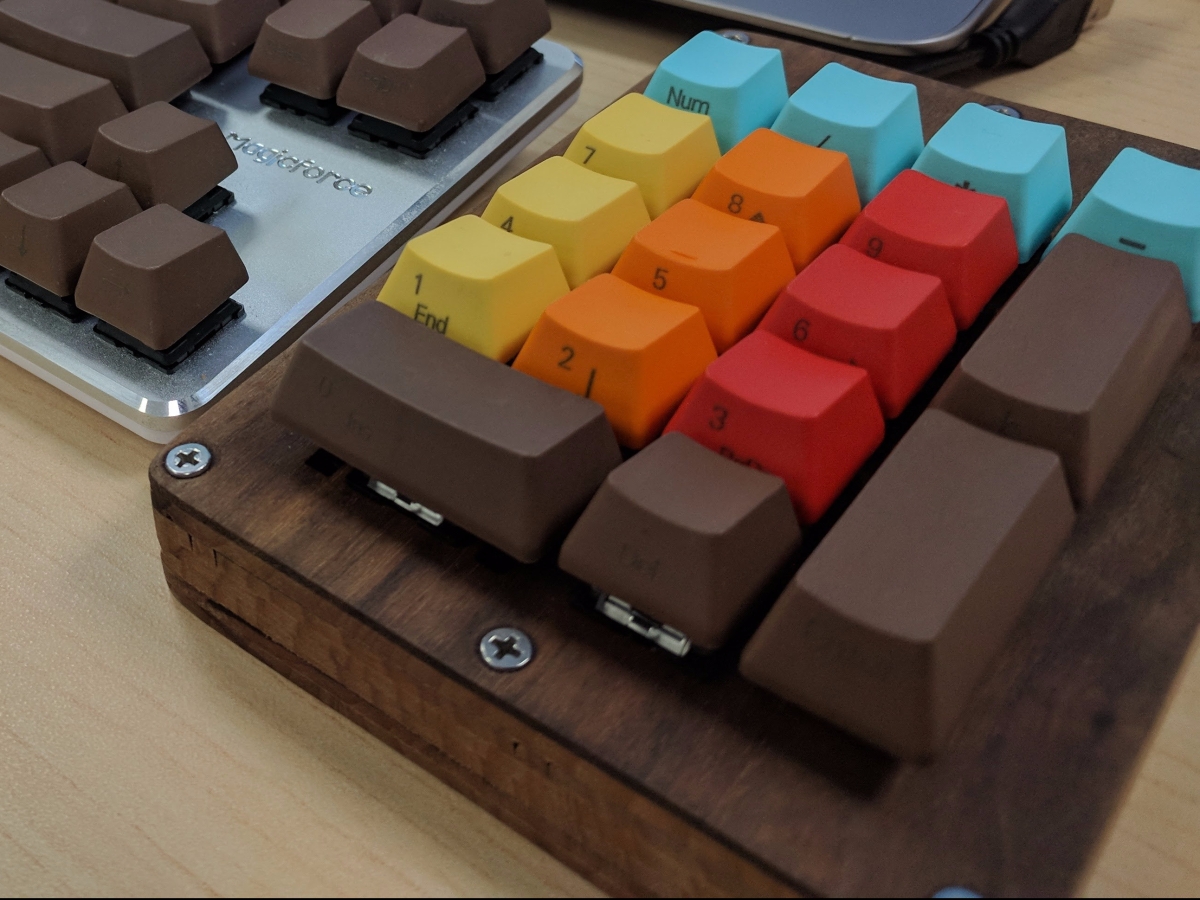Introduction
For an outline of the steps and a full list of tools and materials, check out the final pages of this project. I recommend reading the entire guide, as I go into a lot of details that will definitely help out newer hobbyists
I’ve recently gotten sucked into the world of mechanical keyboards, with their varying switch types and unlimited customization. I’m not as much of a fanatic as others, but nonetheless I’m very intrigued by the merging of a daily tool with a piece of artistic expression; I do spend 8+ hours each day operating one after all.
However, when it comes to the hobby, I’m most interested in building my own custom boards from scratch. It takes my love of electronics, soldering, and programming and lets me turn it into a device that is both practical and fairly attractive. I figured I would start easy – my Mechanical Keyboard, although sleek and compact, is missing a numpad. Now, most days I don’t need a numpad but it’s nice to have every once in a while.
So, I set out to build my own. I quickly became very frustrated with the lack of resources I could find online – searching through assorted threads on random enthusiast forums for details on my next step. There was no central location that provided all the information I needed – nor the directions on how to do it myself. I didn’t want to simply copy someone else, I wanted to know how to make my own!
So, that leads us to this guide. I wanted to provide a ‘one stop shop’ of instructions, required parts, and advice on how to make your very own mechanical keyboard. You’ll follow me through my process and even some of the mistakes I made, and hopefully learn how to create something that’s your own.
Getting Started
First things first, all of the source for this numpad project is available on it’s GitHub page. You shouldn’t have any trouble creating everything from scratch, and won’t need to copy anything. You are going to use a few skills for this project, including light GitHub usage, minor Python experience (don’t worry, the example code should take care of most of it), microcontrollers, basic soldering, and woodworking. Everything is easily achievable by an absolute beginner – it just takes a little practice and patience while following these steps.
This tutorial intends to cover creating CAD models of the keyboard layout, and then the cutting and assembly of each piece. It then goes over how to create the circuit, the wiring of the electronics, and the contents of the firmware. Finally, it includes a full Bill of Materials (BOM) to help with deciding which parts to use. I encourage everyone to use these guidelines for making your first design, but there’s tons of room for improvement that I hope you’ll explore for yourself.

